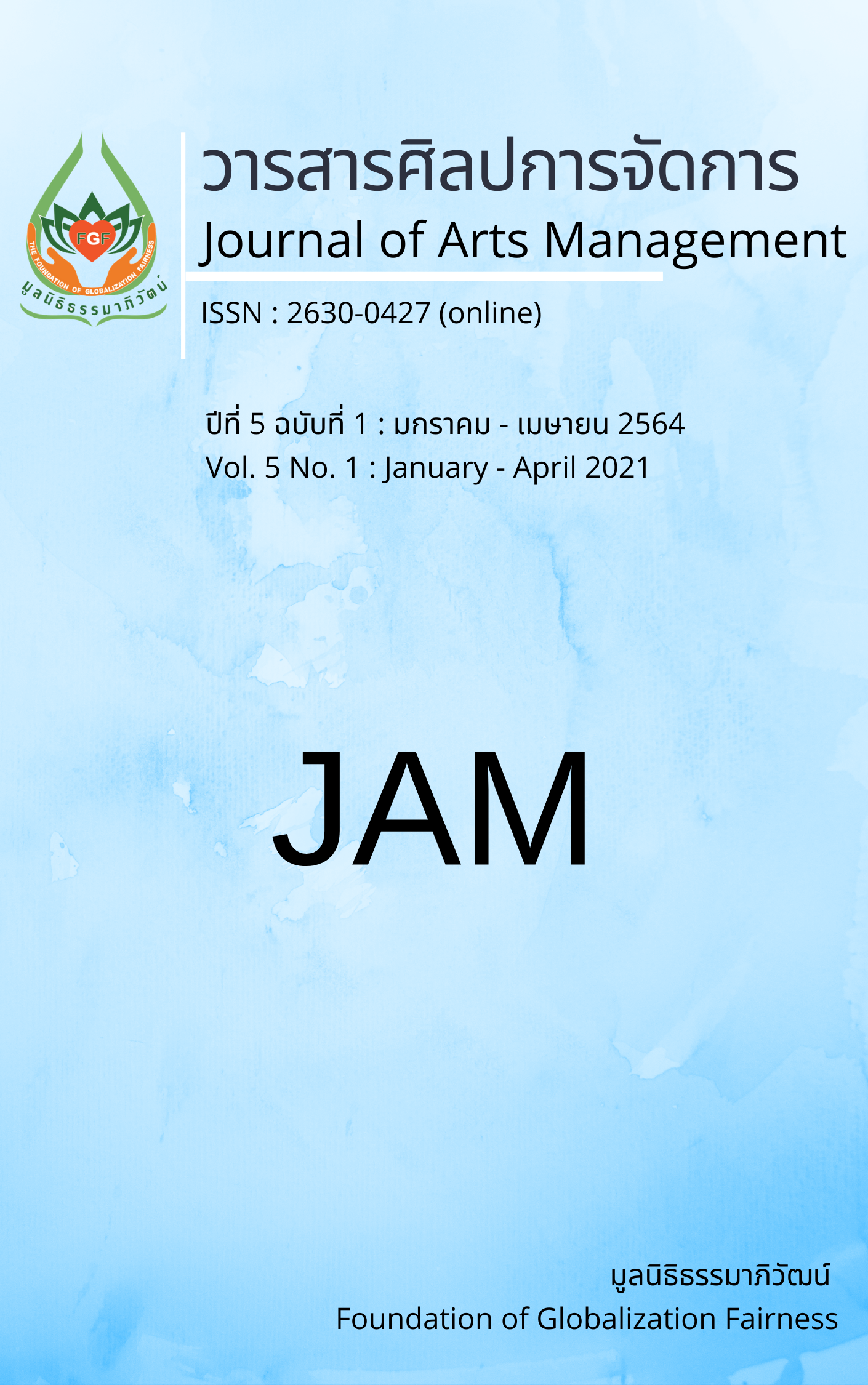Tourism Route Development of Historical Park in Lower Northern of Thailand
Main Article Content
Abstract
This research aimed to study (1) history and the identity through the route of historical park tourism in the Lower North of Thailand, (2) set the tourism route of historical park in the Lower North of Thailand, and (3) create tourism guidebook of historical park in the Lower North of Thailand. The sample was 400 tourist correspondents and 80 stakeholders in tourism. The instrument for collecting data was a questionnaire, in-depth interview, focus group discussion, and workshop. Analysis data by Descriptive statistics and Content Analysis.
The research results were found as follows: (1) the results revealed that each historical park had a different history and identity. Sukhothai Historical Park had the history and the identity welted about Loy Krathong and Candle Festival, Si Satchanalai Historical Park had history and identity related about Bathing and Almsgiving, Kampheang Phet Historical Park had the history and identity related with Row-forest-robes presented to the priests in a ceremony, and Srithep Historical Park had the history related to worship Srithep God; (2) There were found 4 routes of the Historical Park. There first route begins from Srithep to Si Satchanalai to Sukhothai and to Kamphaeng Phet (round trip) with the distance of 465 kilometers. The second route begins from Si Satchanalai to Sukhothai to Kamphaeng Phet and to Srithep (round trip) with the distance of 397 kilometers; and (3) the stakeholder of this research has proposed a guidebook for a 4-day/3-night itinerary including accommodations, activities, accessibilities for travel agency, group and individual travelers, as well as free individual travelers. Moreover, this guidebook has provided a one-day excursion for each park and informed global positioning system (GPS) technology for a car drive or a bike ride around the parks in the lower north of Thailand.
Article Details
Views and opinions appearing in articles in the Journal of Arts of Management It is the responsibility of the author of the article. and does not constitute the view and responsibility of the editorial team I agree that the article is copyright of the Arts and Management Journal.
References
กรมการท่องเที่ยว กระทรวงการท่องเที่ยวและกีฬา. (2555). รายงานการสำรวจสัดส่วนพฤติกรรมการเดินทางท่องเที่ยวในประเทศปี พ.ศ. 2555 (มกราคม - สิงหาคม). สืบค้นเมื่อ 15 กันยายน 2559. จาก http://newdot2.samartmultimedia.com/farms/uploaded/Information%20Technology%20Center/stat/276/2012/INTERNAL%20TOURISM%202012%20by%20province/north/1 ผลการสำรวจภาคเหนือ ปี 2555.pdf
กรมศิลปากร. (ม.ป.ป.). อุทยานประวัติศาสตร์. สืบค้นเมื่อ 14 กันยายน 2563. จาก http://www.finearts.go.th/main/categorie/learning-center?type_id=19
กระทรวงการท่องเที่ยวและกีฬา. (2557). สถิติด้านการท่องเที่ยว 2557. สืบค้นเมื่อ 15 กันยายน 2559. จาก https://www.mots.go.th/more_news_new.php?cid=476
กัลยารัตน์ ศิริรัตน์. (2550). การวางแผนเพื่อพัฒนาเส้นทางท่องเที่ยวเชิงนิเวศของจังหวัดนครศรีธรรมราช (ปริญญาวิทยาศาสตรมหาบัณฑิต). มหาวิทยาลัยศรีนครินทรวิโรฒ.
นฤมล บุญแต่ง. (ม.ป.ป.). การแบ่งภูมิภาคทางภูมิศาสตร์. สืบค้นเมื่อ 14 กันยายน 2563. จาก http://legacy.orst.go.th/?knowledges=การแบ่งภูมิภาคทางภูมิศe
ประคอง กรรณสูต. (2542). สถิติเพื่อการวิจัยทางพฤติกรรมศาสตร์. (พิมพ์ครั้งที่ 3). กรุงเทพฯ: สํานักพิมพ์แห่งจุฬาลงกรณ์มหาวิทยาลัย.
พันธุ์ชนก แชมเบอร์ส และ มณฑรัตน์ บรรจง. (2551). แนวทางการพัฒนาและส่งเสริมแหล่งท่องเที่ยวเชิงประวัติศาสตร์ศิลปะเขมรในประเทศไทย กรณีศึกษา: การจัดรูปแบบเส้นทางการท่องเที่ยวใหม่ในเขตอำเภอเมืองลพบุรี จังหวัดลพบุรี (ปริญญาศิลปศาสตรมหาบัณฑิต). มหาวิทยาลัยนเรศวร.
ศิริลักษณ์ สุวรรณวงศ์. (2538). ทฤษฎีและเทคนิคการสุ่มตัวอย่าง. กรุงเทพฯ: โอเดียนสโตร์.
สินชัย กระบวนแสง. (2545). การจัดการทรัพยากรการท่องเที่ยวเชิงประวัติศาสตร์ โบราณสถานและศาสนสถาน. กรุงเทพฯ: มหาวิทยาลัยสุโขทัยธรรมาธิราช.
Dickman, S. (1996). Tourism: An Introductory Text. (2nd ed.). Australia: Hodder Education.
Gilbert, D. (1989). Rural Tourism and Marketing: Synthesis and new ways of working. Tourism Management, 10(1), 39-50.
Hummelbrunner, R. & Miglbauer, E. (1994). Tourism Promotion and Potential in Peripheral Areas: The Austrian case. Journal of Sustainable Tourism, 2(1-2), 41-50.
Pigram, J. (1993). Planning for Tourism in Rural Areas: Bridging the policy implementation gap. In Pearce, D. G. & Butler, R. W. (eds.), Tourism research: Critique and challenge, 156–174. London: Routledge.
Poon, A. (1989). Tourism, Technology and Competitive Strategies. Wallingford, Oxon: CAB International.


